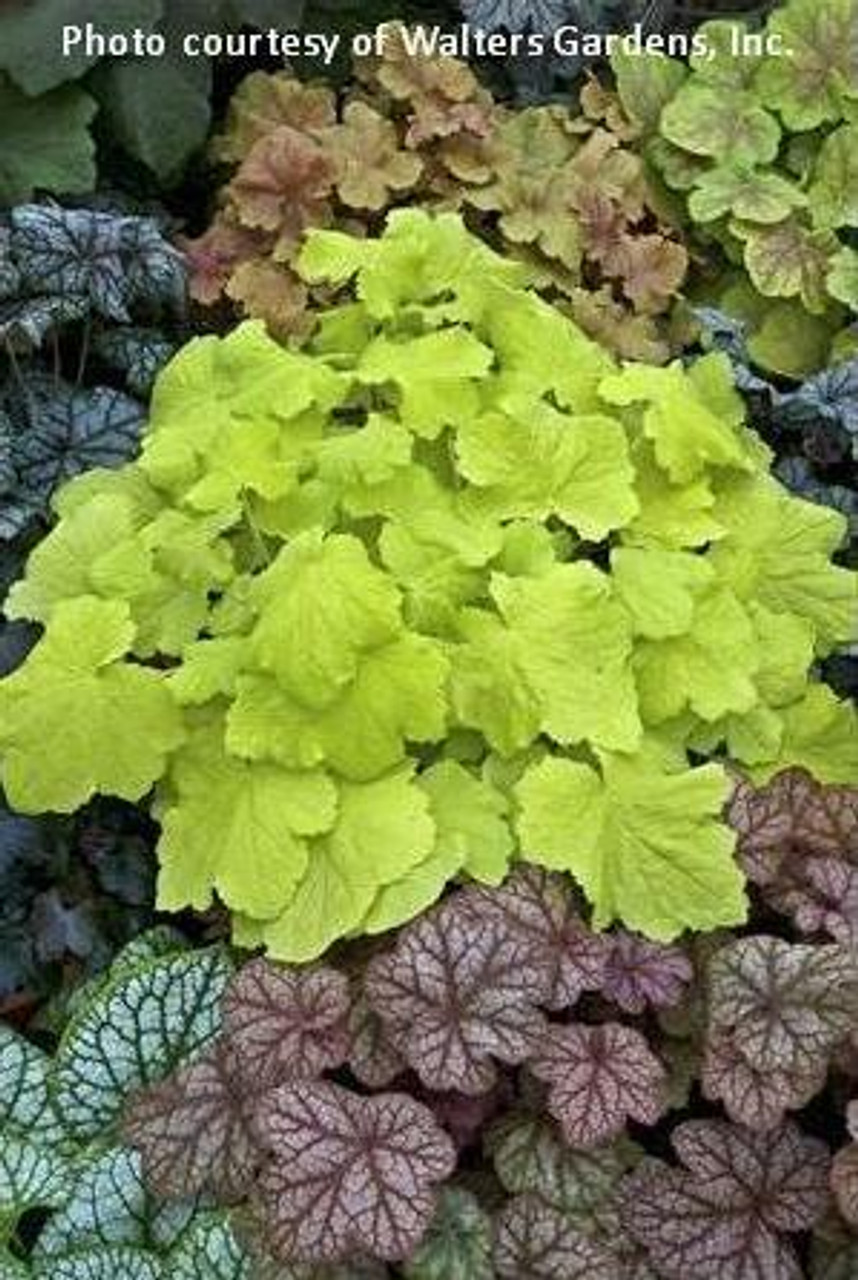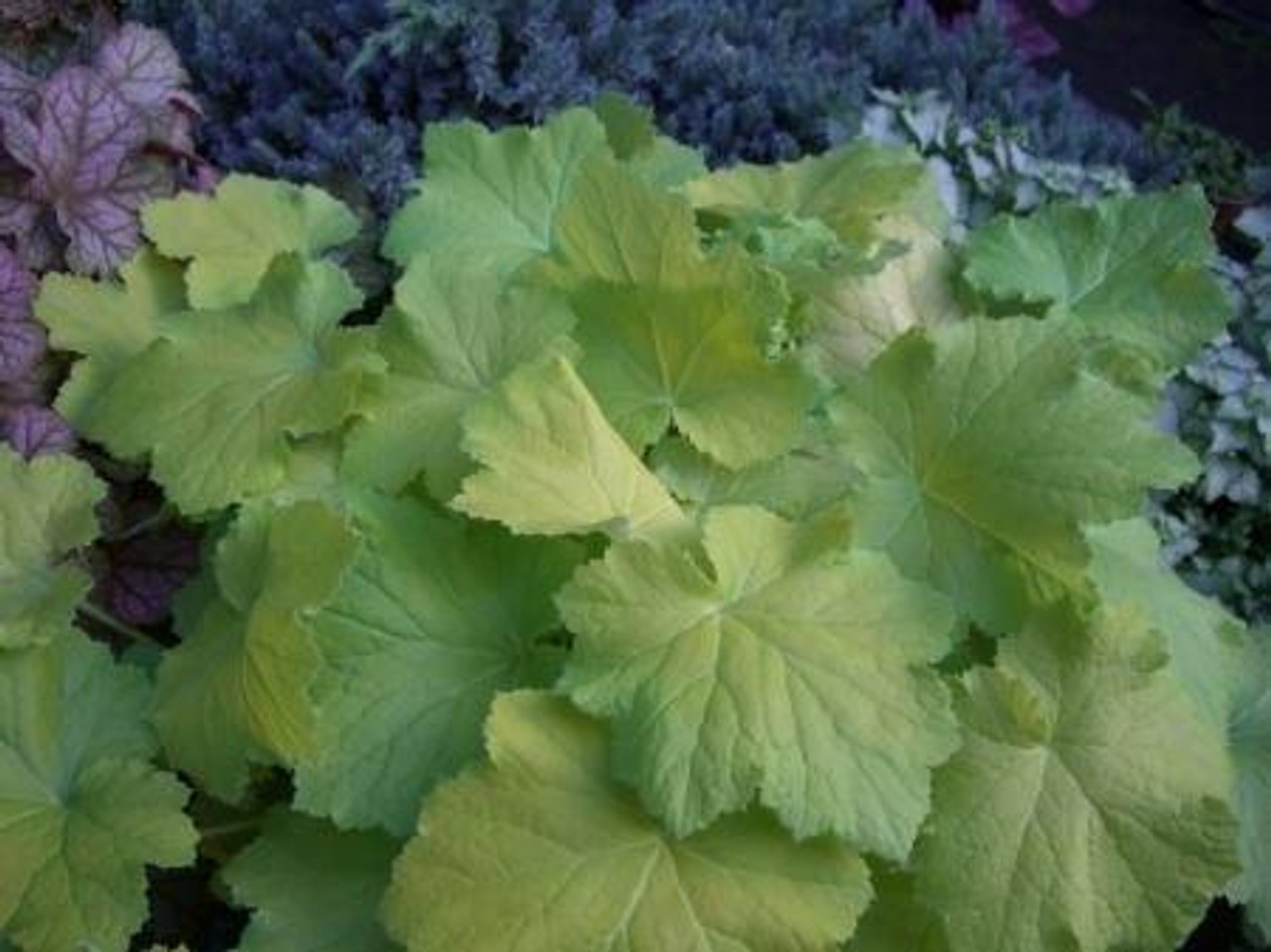Product Description
Heuchera 'Pistache' PP19585Common Name: Coral Bells
Zone 4 to 9, Evergreen (in some or all zones)
Part shade to full shade.
Plants reach 10 inches tall and 14 inches wide,
clump-forming perennial.
'Pistache' is a robust grower with large, light lime green to chartreuse-yellow leaves depending on the sun exposure. The color is a perfect foil for blue Hostas or purple-leaved Heucheras. The leaves are so light in color, this variety appreciates more shade than some of the other villosa hybrids. Rounded, lobed, long-petiole leaves may develop a red edge in fall. Fabulous compact habit looks great in containers or as edging.
This Heuchera villosa hybrid is a large, late blooming type that exhibits an increased tolerance of high heat and humidity over other species. White flowers in midsummer, though they are grown more for their fantastic foliage. H. villosa is native to the southeastern United States.
Easy to grow average soil; Heucheras will perform best in organically rich, humus, medium wet, well-drained soil with a neutral pH. Performs well in full sun in the north, but prefers some afternoon shade in the south. If grown in full sun, consistent moisture is particularly important. They grow most vigorously and have the strongest colors when grown in partial shade (preferably afternoon shade). They can also be grown in full shade but their growth rate will be very slow.
Coral bells are easy to grow and blend easily with most other perennials in the landscape. Because of their low, mounding habit, they are often used as edging along paths or in containers. Remove stems of faded flowers to encourage additional bloom. Foliage is essentially evergreen in warm winter climates, but the amount of retained foliage color in cold winter climates depends upon the temperatures. In cold winter climates, winter mulch applied after the ground freezes will help prevent root heaving. Clumps may be divided in the spring every 3 to 4 years .
Attributes: Border plants, Container, Cut flower or foliage, Edging, Mass planting, Salt Tolerant, Specimen or focal point plant, Deer resistant, Attracts butterflies and hummingbirds.
Other Details
The most important part of the plant is its root system. Healthy roots are the foundation of a healthy, vibrant plant. The type of plug container used is based on the specific needs of the plants. Perennials offered as bare root traditionally perform better when planted as bare root.Planted in a specialized mix, potted plants have well established root systems. Top growth stage will vary depending on the current life cycle and time of year when shipped. In Winter and early Spring dormant plants may be shipped. Dormant plants may be planted right away, even before the last frost date.
Most bare root varieties are field grown for at least one season, though Hemerocallis and Hosta are grown for two seasons. The bulk of the soil is removed during the harvesting process and the tops of most varieties are trimmed back to the crown. They are graded, packed in shredded aspen or sphagnum moss and stored in freezers until ready to be shipped.
See our Container Sizes and Bare Root Perennials pages for more information.
Plant information and care is provided in the Overview section, Plant Genus Page and general information is provided in the Planting Care & Guides. Additional questions can be asked on each Plant page.
Plant Spacing: Using the maximum mature spread or width of a plant to guide spacing, ensures space to grow to full size. To fill an area sooner, plant them closer together. Just remember, future thinning or transplanting may be needed.
Water: Keep a close eye on newly planted perennials, especially throughout the first growing year. Most early plant loss is due to too much or too little water!





